At the end of September 2013, I had been sitting on unemployment for a month. As October began, I continued to search for work in the Panhandle.
Nebraska requires those who receive unemployment benefits to apply for a certain number of jobs each week. It was Sunday evening and I was still short one application. The weekly deadline was looming and I didn’t know what to do. I scoured every job posting and want ad I could find. Then, I saw something that piqued my interest.
The Star-Herald was looking for a reporter and photographer. While I enjoy writing and taking photographs, I did not think I was qualified. I also had a degree in Anthropology with a double minor in Black Studies and African Studies. I filled out the application and resigned myself to the fact that I would not be finding a job for another week.
For whatever reasons, Editor Steve Frederick called me Monday morning. I listened to the answering machine as he left his message.
“Holy shit,” I thought. “The dude actually called me.”
A panic set in. I wanted to pick up the phone and call him back, but thought he would know I had listened to his message. That would be a strike against me.
I paced back and forth in my living room for twenty minutes before calling him back. Over the course of the next week, Steve would call or email. I would panic and delay replying. He asked for examples of my writing. Once I sent them, I was sure he wouldn’t hire me.
I figured he would have a check list of disqualifications for me, too liberal being at the top of that list. But he called back. I had an interview, which I thought went okay. I still didn’t think I would get the job.
Steve called again and asked if I could come in and take a test. It was all about writing and if I could actually write. There was also a logic section. As we walked to the interview room where I would take this timed test Steve said, “Don’t worry. Football players can pass this test.”
Great. No pressure there.
I wasn’t sure how I did. Of course, I aced the parts where you have to determine to, too, and two as well as the writing section where you pick out the errors, but that logic test, man I thought I screwed that up big time. Was I dumber than a football player?
I took a typing test as well. Though I said on my resume I could type 60 words per minute, the last official test I took was 81 words per minute. I downplayed my skills.
After the test, I went home, satisfied I did my best, but still didn’t think I had the job.
The next day, Steve called again. He asked me to write two freelance articles for him. I had a week to do them. He emailed me the information. One was about the changing colors of the leaves in fall and the other was a profile on Scottsbluff Middle School band director Michael Koch.
I turned both of them in three days later.
Steve and then Assistant Editor Bart Schaneman emailed me back with some suggestions on how to make the story better. Steve called and offered me a job.
“Can you start November 5?” he asked.
Yes.
Steve called again the next day. “Can you start on October 28?”
Yeah, dude. I’m on unemployment. What the hell else am I going to?
Steve told me my first week at work would be more of a job shadow than anything else so I could get the feel of a newsroom and understand how everything worked. Great, I thought, because I’m terrified.
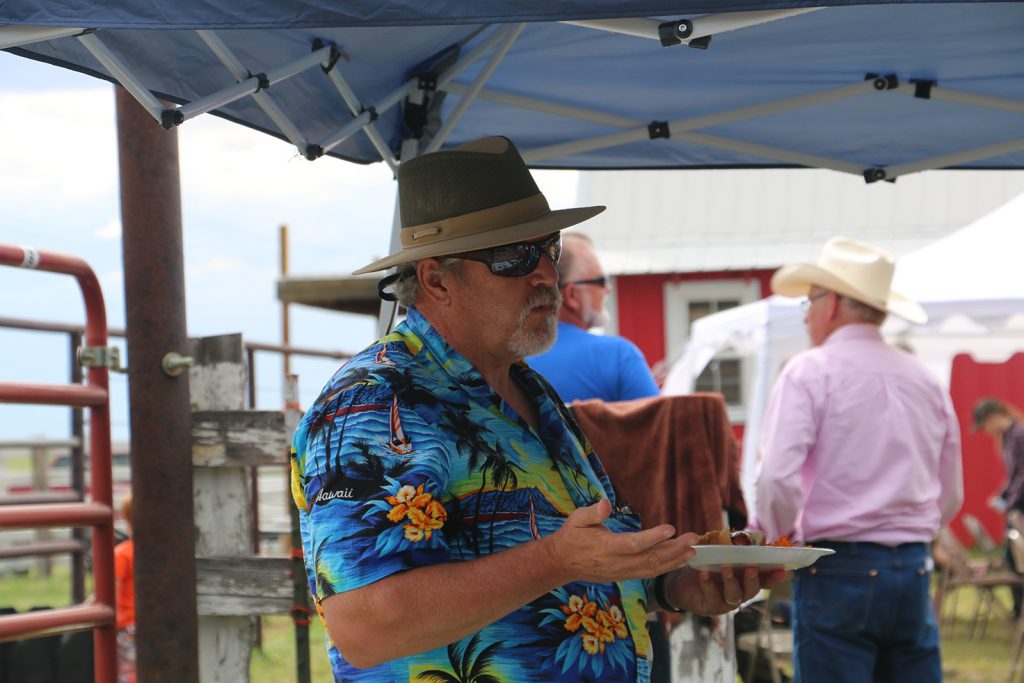
I found this guy at the Wndblown Arts Festival in Bushnell. He looked like he was having a good time.
On October 28, I reported for my first day at Star-Herald. Steve was not there. This day was the first day of a week-long vacation for him. Bart showed me to my desk, which was next to his, and suggested I find some cleaning materials to clean the crud off my desk and my keyboard. I tried to make this last as long as possible.
Later in the day, Bart assigned me a Canon 60D. It was the first DSLR I ever used. He asked me to go out and find “art,” better known as “we need a photo so go find something interesting.”
I got in my car and drove several blocks away before parking and reading the camera’s instruction manual. The first interesting thing I found was a guy pushing his daughter on the swings in Gering. I didn’t take a picture because I was still thinking that it would be weird and creepy to walk up to someone and ask to take their picture for the newspaper. After driving back to Scottsbluff, I eventually found a guy raking leaves. His dog kept jumping into the pile of leaves. I took the picture, but I wondered what I had gotten myself into.
When Steve eventually returned from vacation, I spent months trying to figure him out. I knew from watching other reporters to never hand in shoddy work and not to shirk your responsibilities, not that I would have otherwise.
Steve was mostly hands-off on how you chose to write your stories, but he was a damned good editor. “I can’t teach you how to write. You either know that or you don’t by now,” he told me. “But I can teach you how to be a reporter.”
I also had to write a column, introducing myself to the community. Every now and then, I was allowed to write another one. I eventually asked if I could write a column every week. Steve was enthusiastic and happy I had taken the initiative. Jeff Van Patten designed a logo for me.
My column went from occasional to every Sunday in the lifestyle section to every Thursday on the editorial page.
Along the way, Steve and Bart taught me how to tighten my work, how to work faster, how to stay within word counts, and other fine details of the job.

When Steve Frederick became the special projects editor, he worked closely with Ilene Anderson to create Out Yonder magazines for the newspaper. Steve wrote the stories and took the photographs. Ilene designed the layouts.
I really got to know Steve when he stepped down as editor. He wanted to write again, so he became the special projects editor and dove back into writing.
Steve is also a phenomenal photographer. He is better at writing and taking photos than me and I thought, “This guy is going to retire one day. I need to learn everything I can from him and pick his brain while he is here.”
And so I have.
When Steve asked me if my husband, Paul, and I wanted to go to Toadstool Park with him. He knew I had wanted to go for more than twenty years, but never quite made it. “Hell, yes,” I told him. While most of the day was hiking, I paid special attention to what Steve was taking photographs of and which lenses he used. He taught me all about fish eye lenses that day.
When I was planning a trip home to New York, he gave me an old manual lens he had used with his film camera. It worked on my Nikon D7000. I took it to New York and left my kit lens home to force myself to learn to work in manual mode. It’s not easy, but it’s a worthy lesson.
Because I hadn’t been around sophisticated cameras a lot, I grabbed every opportunity to ask Steve questions so I could become a better photographer. I’m still learning, but I’m much farther along in my quest to be a great photographer because of Steve.
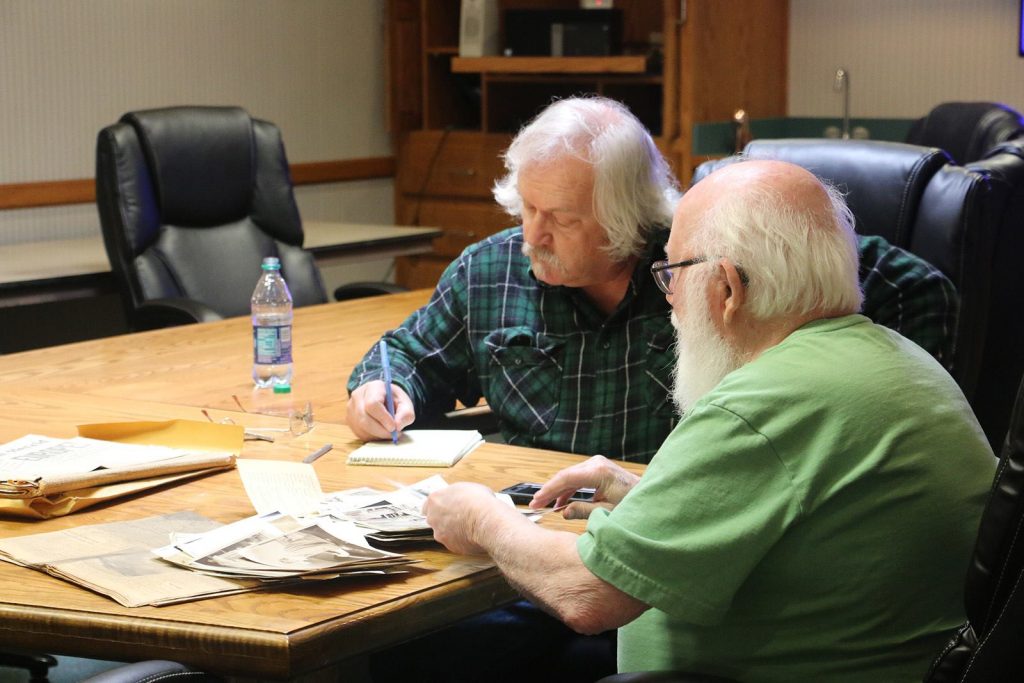
Steve Frederick takes notes while Jack Hartshorn tells Steve about his life in the newspaper business.
Whenever I needed help on a story, I knew I could ask Steve to take a look at it.
“Steve? My story on Howard Olsen is 3,200 words long. It’s not supposed to be more than 2,000,but I can’t see where to cut it? Can you help me?”
“I’ll be brutal.”
“That’s what I need.”
“Okay. Show me what you got.”
One crucial lesson Steve taught me was that you may have a fantastic quote for a story, but if it doesn’t fit in with the rest of the story or narrative, you have “bite the bullet” and delete it.
“It’s going to sting, but it’s necessary to make a better story,” he told me.
Steve gave me my story back. Not only did he cut parts out, he found some grammatical errors and AP style errors I had missed. I thanked him and got back to work. After looking at what he did, it made sense why he axed those portions. The story was better now. I re-read the story and tightened up a few other parts. It was still almost 2,500 words. I decided to turn it in that way.
The story passed muster with my editor, Brad Staman, and the copy desk. It was one of the hardest, and best, stories I’ve written because of the level of involvement, the number of people interviewed, my success in weaving a great story, but most importantly, because Steve taught me again how to be a better writer.
In March 2017, I was writing a story about a young lady speaking out against child sexual assault. My interview was a little over two hours long. The written story was going well. I finished it, proofread it, and turned it in to Brad. He read it, made suggestions about deleting some paragraphs and moving others. I took it back to my desk and worked on it some more.
Usually, I can look at suggestions, make corrections, proofread again and turn them in. This time, something was bothering me, but I didn’t know what. I read the story five more times, but couldn’t put my finger on what was wrong. So, I printed out a copy and walked over to Steve’s desk. I asked him if he had any free time in the next day or so to look at my story.
“Sure. What’s wrong with it?”
“Well, it’s 804 words, which is fine, but there is something I don’t think is right and I can’t figure it out.”
“Leave it on my desk and I’ll have a look at it.”
I figured it would take a day or so for him to look at it. About a half an hour later, Steve called me over to his desk.
He found two issues. First, I had neglected to write about how her family had supported her. That omission, Steve said, would lead people to believe the perpetrator was a father or brother. Nope. I need to call her back and get a quote to the contrary.
The other issue with the story was that I had written a sentence before a quote, which changed the meaning of the quote. When Steve read it out loud, I was horrified. He asked what the young lady meant to say. We sat there at his desk rewriting that quote into a paraphrase without the hideous language.
I had read over both. It didn’t matter that I had read it seven times by then. I was never going to catch either mistake.
Another lesson Steve had taught – always get someone else to read your work. Disaster avoided and the story was well-received.
During my last job interview with Steve, he looked out from his office into the newsroom and said, “I want someone who doesn’t sit in the office all day with a telephone attached to their face and who will go out there and dig to find the stories people want to read.”
I hope I have followed his example.
Thank you, Steve, for taking a chance on me. It has meant the world to me. You have made me a better writer and photographer by being willing and open to helping out those at the beginning stages of their careers. I wish you many long days of fishing and spending time with Maria. And, seriously, thank you for not sharing any of your fish with me.

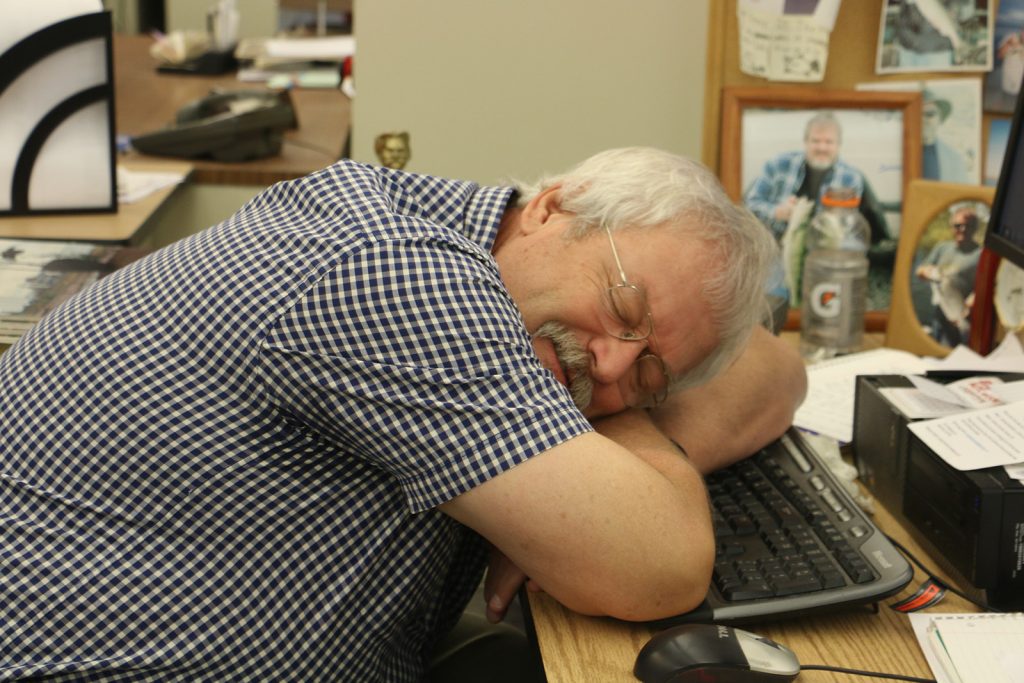

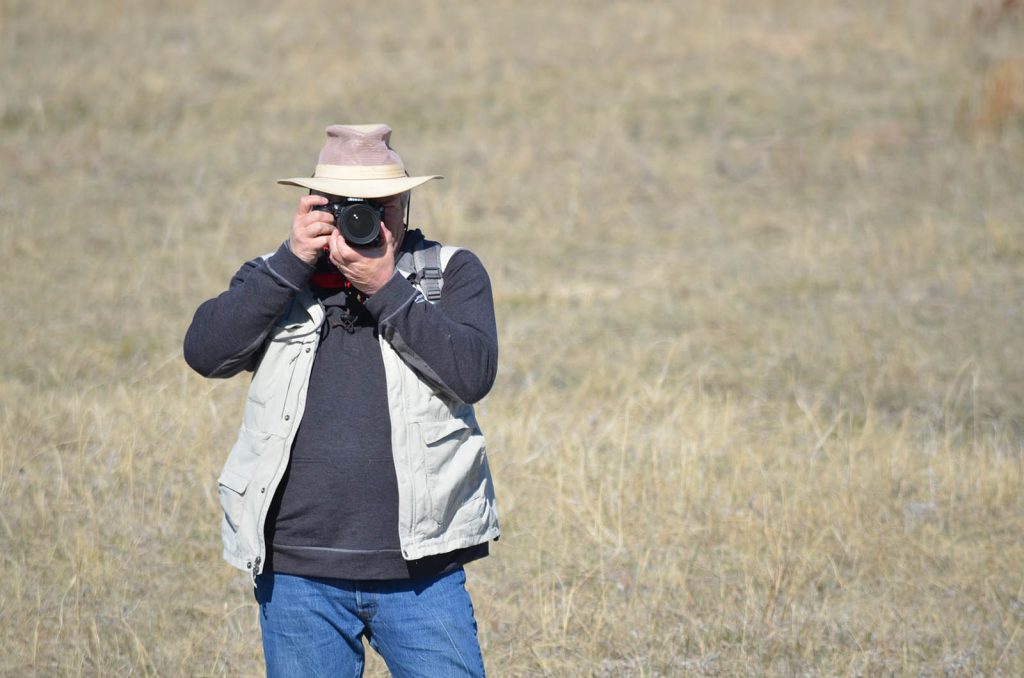
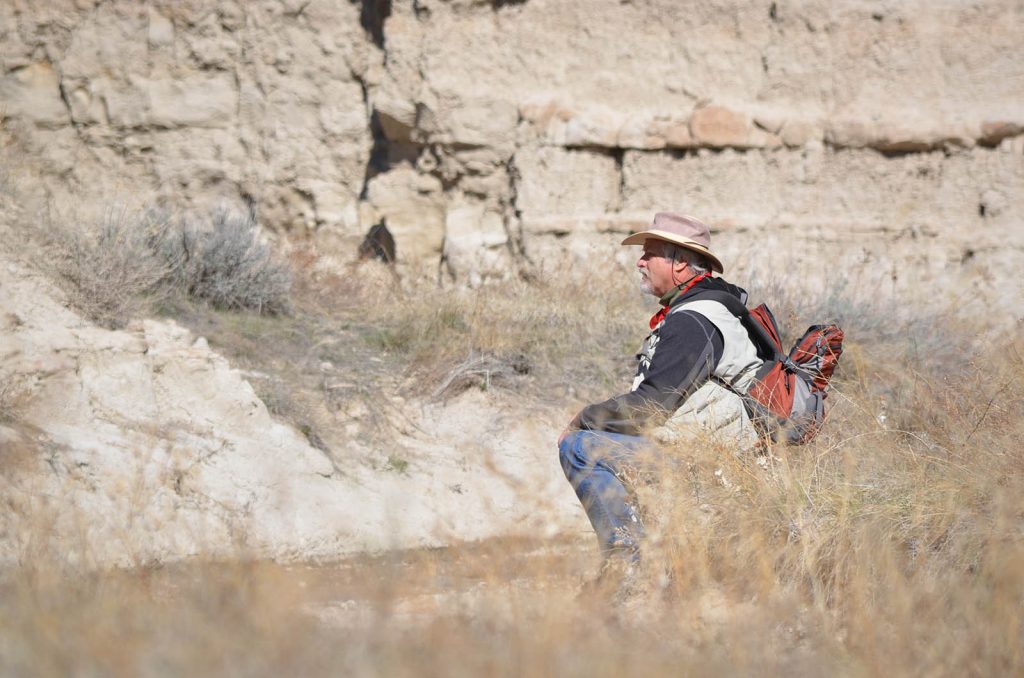
Sandra Reddish
Excellent!
Steve Frederick
I learned a long time ago that you can’t help somebody who doesn’t want to be helped. If you learned anything from me, it’s because you wanted to learn. I always enjoyed working with you because you listened and understand any point I was trying to make. You’ve make fantastic progress because of you, not me.
Steve Frederick
And now you don’t ever get any fish, ever. Paul, maybe, but not you.
Irene North
It’s okay. Paul likes fish and fishing.
Bas van Beek
Did Steve ever enlighten you on the exact question which is answered by 42?
Irene North
Bas van Beek No. He’s taking that one to the grave with him.
Mindy Larson Baird
Another amazing story! Happy Retirement Steve!
Kathy Torell Hatfield
Fabulous story! Thanks for sharing!
Maria L. Pineda
Thanks Irene. Enjoyed reading what you wrote about S.
Rick Myers
Glad I wasn’t the oldest retiree there ?